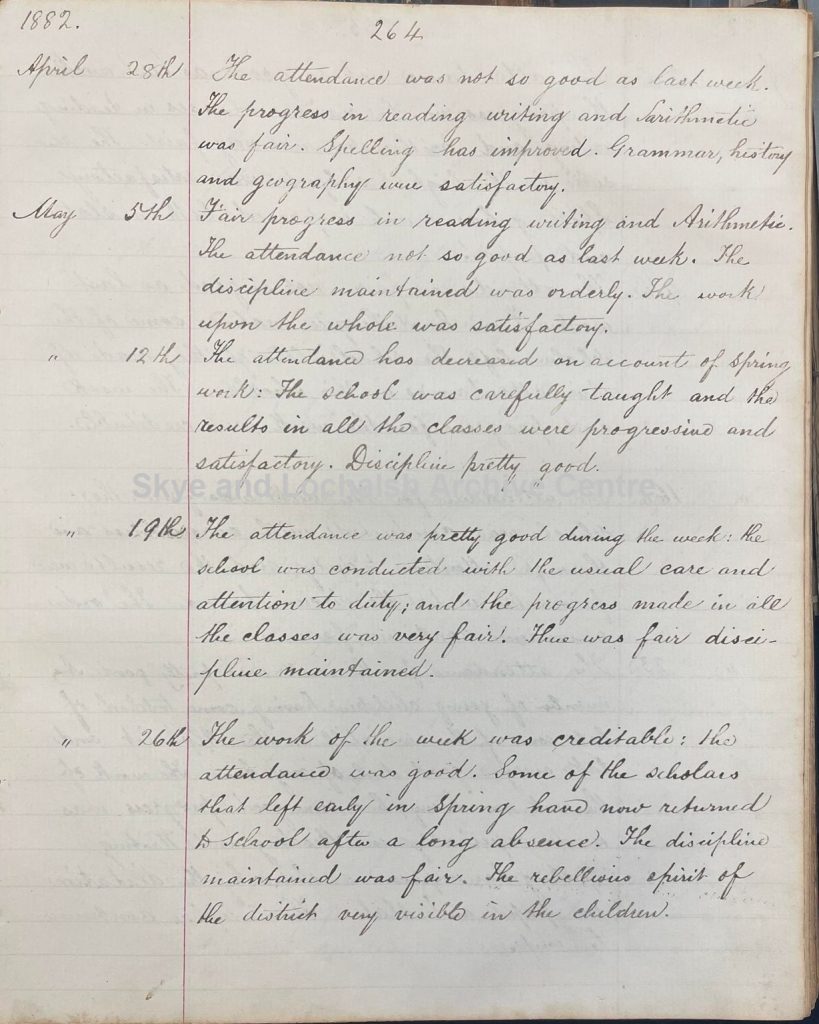In 1882, further protests occurred in the north-west of the island at Glendale with even more the following year. As a result of the ongoing protests, Sheriff Ivory tried to secure additional help. He felt strongly that the law must be “vindicated” and he asked the government to supply gunboats and 100 troops to assist in keeping law and order. Home Secretary, Sir William Harcourt, was reluctant to comply with the request, claiming such action could only be justified if the ordinary processes of the law had broken down and civil disorder was present or imminent. The government refused the request and recommended that the Inverness-shire authorities instead increase their police force. By November 1882, 50 extra constables were added to the 45-strong Inverness-shire force.
School records detail the impact on the Braes children. The township had two schools for the 150 pupils: MacDiarmid School and Braes Public School. The impact of the agitation and Battle can be found in the MacDiarmid School log book.
In October 1884, a clash between crofters and police at Kilmuir led Ivory to again ask the government for military assistance. This time, the government consented, and on 16 November 1884, around 400 marines were stationed on Skye.
In the absence of any significant disturbances, however, the majority of the marines were instructed to leave the following month. The remainder were stationed in small detachments scattered throughout the island. An account from Mrs P. MacPherson of Skye conveys the feelings of the people about the presence of the marines:
“I was about nine years old when the marines came to the glen. I saw them marching down the hill with their muskets with their bayonets’ shining and I was so afraid I felt my heart swelling til I thought my ribs would burst. But I couldn’t even run. I thought I was turned to stone but for the pain of my heart swelling.”
Mrs P. MacPherson in The Skye Martyr by G.W. Macpherson, 1995.
By summer 1885 the Secretary of State had instructed Sheriff Ivory that all marines and extra police be withdrawn from Skye, but this did not signal the end of the agitation or hostilities towards the crofters.


